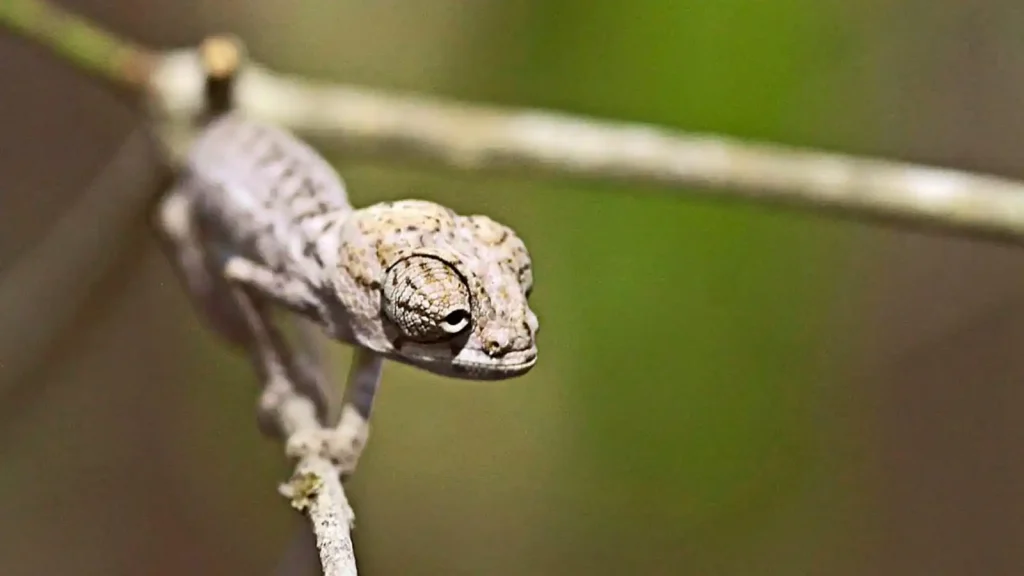Madagascar episode 3 – Madagascar, an island nation off the east coast of Africa, is a land of striking contrasts and extraordinary biodiversity. While the eastern region is blanketed in lush rainforests, the western and southern regions are arid, almost desert-like landscapes where rainfall can be scarce for nine months or even an entire year. In this scorching and unforgiving environment, the animals and plants have evolved remarkable strategies to survive and thrive, making them uniquely adapted to the island’s seasonal changes.
One of the most intriguing residents of Madagascar’s dry southern lands is the Verreaux’s sifaka, a peculiar species of lemur. This primate calls the “spiny forest” home, a habitat characterized by trees with sharp spikes and some that even drip toxic chemicals. Amidst this hostile environment, the Verreaux’s sifaka has learned to navigate and find sustenance, showcasing its remarkable adaptability.
Equally fascinating are the baobab forests, where the bulbous trees provide shelter for the world’s smallest primates, the huge-eyed mouse lemurs. These tiny nocturnal creatures emerge at night to feed on the sugary excretions of bizarre, fluffy insects, forming a unique symbiotic relationship within this arid ecosystem.
When the long-awaited rains finally arrive, the landscape undergoes a dramatic transformation, and a remarkable phenomenon unfolds. The Labord’s chameleon, one of the shortest-lived land vertebrates globally, emerges from its egg to begin a fleeting but remarkable life cycle. With only 12 weeks from hatching to adulthood, this striking reptile must pack its entire existence into a mere three months, having spent a staggering nine months gestating within the egg.
These extraordinary animals, along with countless others, are unique to Madagascar and have evolved exquisite adaptations to the island’s seasonal fluctuations. However, their survival is threatened by various factors, including hunting and habitat loss, with the southern regions facing particularly grave challenges.
Madagascar episode 3
One of the most elusive and enigmatic inhabitants of Madagascar’s remote forests is the fossa, a cat-like predator that is active primarily at night. Capturing footage of this rare and fearsome creature was the filming team’s ultimate challenge, as they ventured into the island’s most secluded corners to document its behavior and shed light on its mysterious existence.
Madagascar’s biodiversity is a testament to the resilience of life and the incredible adaptations that have evolved in response to the island’s extreme environments. From the spiky forests and baobab groves to the arid deserts and fleeting life cycles, this island nation offers a captivating tapestry of life, survival, and the delicate balance that exists between its inhabitants and their ever-changing surroundings.
Whether you’re a nature enthusiast, a researcher, or simply someone in awe of the marvels of the natural world, exploring Madagascar’s ecosystems promises an unforgettable journey through a land where extremes converge and life finds a way to thrive against all odds.
F.A.Q. about “Madagascar Episode 3”
Q.: What unique habitats are explored in Madagascar episode 3?
A.: Madagascar episode 3 delves into the island’s diverse landscapes, from the lush eastern rainforests to the arid, desert-like western and southern regions. The episode showcases how these contrasting environments support unique wildlife and plant species that have adapted to thrive under extreme conditions.
Q.: Who are the Verreaux’s sifaka, and how do they adapt to their environment?
A.: The Verreaux’s sifaka is a species of lemur native to Madagascar, highlighted for their remarkable adaptability in the episode. They inhabit the “spiny forest,” navigating through trees with sharp spikes and toxic chemicals. Their survival tactics demonstrate extraordinary adaptability to the island’s harsh conditions.
Q.: Can you tell me about the baobab forests and their inhabitants?
A.: Within Madagascar’s baobab forests, the episode uncovers the world of the tiny mouse lemurs, the smallest primates, who emerge at night to feed on sugary excretions from insects. This ecosystem showcases a unique symbiotic relationship between the lemurs and their environment, highlighting the biodiversity of the island.
Q.: What is unique about the Labord’s chameleon as featured in the episode?
A.: The Labord’s chameleon, presented in the episode, is notable for its brief life cycle, being one of the shortest-lived land vertebrates. From hatching to adulthood, they have only 12 weeks to live, spending nine months gestating within the egg. This extraordinary life cycle is a testament to the unique adaptations of Madagascar’s wildlife.
Q.: How does the episode address the challenges faced by Madagascar’s wildlife?
A.: The episode not only celebrates the unique biodiversity of Madagascar but also addresses the significant threats to its wildlife, including habitat loss and hunting. It particularly highlights the grave challenges in the southern regions, emphasizing the need for conservation efforts to protect these unique species and their habitats.
Q.: What makes the fossa an intriguing subject of the episode?
A.: The fossa, a cat-like predator and one of Madagascar’s most elusive and enigmatic inhabitants, is featured prominently. The episode’s efforts to capture footage of this nocturnal creature offer insights into its mysterious life, demonstrating the rich tapestry of life that Madagascar supports and the challenges of studying such rare species.
Conclusion Madagascar episode 3:
Madagascar episode 3 is a captivating exploration of the island’s extreme environments and the extraordinary wildlife that inhabits them. From the adaptability of the Verreaux’s sifaka in the spiny forests to the fleeting life of the Labord’s chameleon and the enigmatic fossa, the episode offers a profound look at the resilience and beauty of life in one of the world’s most biodiverse regions. The series highlights the urgent need for conservation efforts to ensure the survival of these unique species and their habitats, inviting viewers to appreciate and support the preservation of Madagascar’s natural heritage.




